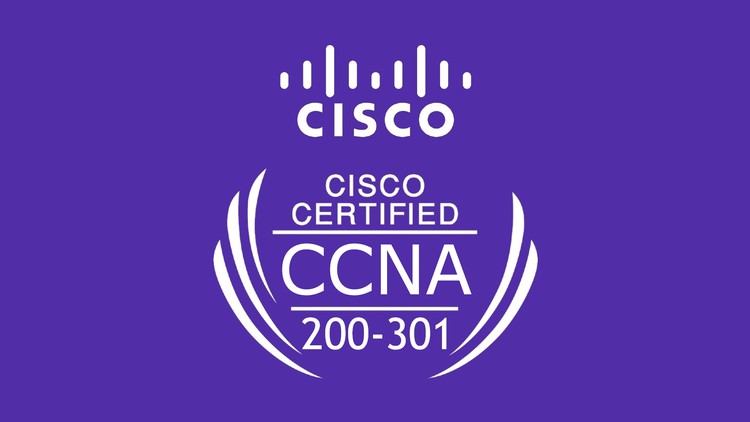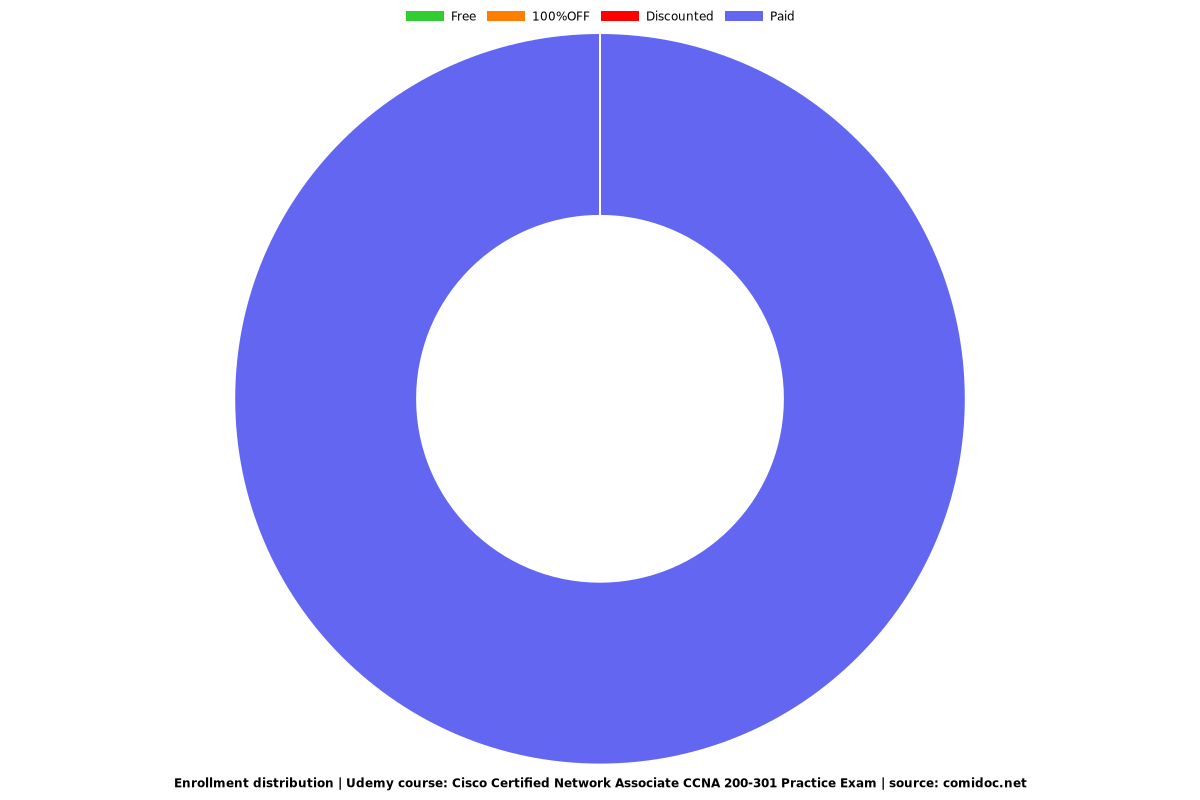Cisco Certified Network Associate CCNA 200-301 Practice Exam
Cisco Certified Network Associate : CCNA 200-301 Certification Practice Exam, Updated question as per latest Syllabus.

What you will learn
You'll have a clear understanding of which Cisco Certified Network Associate : CCNA 200-301 Certification exam domains you need to study.
You'll feel confident taking the CCNA 200-301 exam knowing these practice tests have prepared you for what you will see on the actual exam.
You'll learn additional knowledge from the question explanations to prepare you to pass the Cisco Certified Network Associate : CCNA 200-301 Certification exam.
Students preparing for the Cisco Certified Network Associate : CCNA 200-301
Why take this course?
The Cisco Certified Network Associate (CCNA) certification validates a candidate’s knowledge of networking fundamentals. It’s an entry-level credential specific to Cisco. The CCNA requires candidates to take and pass an official certification exam to earn the credential. Therefore, it’s important that CCNA 200-301 exam-takers are fully prepared when they sit the exam.
Exam Details:
Exam Code: 200-301 v7
Exam Type: Written examination
Exam Format: Single-answer Question, Multiple-answer Question, Match
Time: 120min
Passing Score/Total Score: 800/1000
Exam Cost: 300USD
Language: Japanese, English
The 200-301 exam covers six domains that are weighted as follows:
Network Fundamentals - 20%
Network Access – 20%
IP Connectivity – 25%
IP Services – 10%
Automation and Programmability – 10%
Security Fundamentals – 15%
The CCNA exam asks questions in the following areas:
Module 1: Network Fundamentals
Explain the role and function of network components
Describe characteristics of network topology architectures
Compare physical interface and cabling types
Identify interface and cable issues (collisions, errors, mismatch duplex, and/or speed)
Compare TCP to UDP
Configure and verify IPv4 addressing and subnetting
Describe the need for private IPv4 addressing
Configure and verify IPv6 addressing and prefix
Compare IPv6 address types
Verify IP parameters for Client OS (Windows, Mac OS, Linux)
Describe wireless principles
Explain virtualization fundamentals (virtual machines)
Describe switching concepts
Module 2: Network Access
Configure and verify VLANs (normal range) spanning multiple switches
Configure and verify interswitch connectivity
Configure and verify Layer 2 discovery protocols (Cisco Discovery Protocol and LLDP)
Configure and verify (Layer 2/Layer 3) EtherChannel (LACP)
Describe the need for and basic operations of Rapid PVST+ Spanning Tree Protocol and identify basic operations
Compare Cisco Wireless Architectures and AP modes
Describe physical infrastructure connections of WLAN components (AP,WLC, access/trunk ports, and LAG)
Describe AP and WLC management access connections (Telnet, SSH, HTTP,HTTPS, console, and TACACS+/RADIUS)
Configure the components of a wireless LAN access for client connectivity using GUI only such as WLAN creation, security settings, QoS profiles, and advanced WLAN settings
Module 3: IP Connectivity
Interpret the components of routing table
Determine how a router makes a forwarding decision by default
Configure and verify IPv4 and IPv6 static routing
Configure and verify single area OSPFv2
Describe the purpose of first hop redundancy protocol
Module 4: IP Services
Configure and verify inside source NAT using static and pools
Configure and verify NTP operating in a client and server mode
Explain the role of DHCP and DNS within the network
Explain the function of SNMP in network operations
Describe the use of syslog features including facilities and levels
Configure and verify DHCP client and relay
Explain the forwarding per-hop behavior (PHB) for QoS such as classification, marking, queuing, congestion, policing, shaping
Configure network devices for remote access using SSH
Describe the capabilities and function of TFTP/FTP in the network
Module 5: Security Fundamentals
Define key security concepts (threats, vulnerabilities, exploits, and mitigation techniques)
Describe security program elements (user awareness, training, and physical access control)
Configure device access control using local passwords
Describe security password policies elements, such as management, complexity, and password alternatives (multifactor authentication, certificates, and biometrics)
Describe remote access and site-to-site VPNs
Configure and verify access control lists
Configure Layer 2 security features (DHCP snooping, dynamic ARP inspection, and port security)
Differentiate authentication, authorization, and accounting concepts
Describe wireless security protocols (WPA, WPA2, and WPA3)
Configure WLAN using WPA2 PSK using the GUI
Module 6: Automation and Programmability
Explain how automation impacts network management
Compare traditional networks with controller-based networking
Describe controller-based and software defined architectures (overlay, underlay, and fabric)
Compare traditional campus device management with Cisco DNA Center enabled device management
Describe characteristics of REST-based APIs (CRUD, HTTP verbs, and data encoding)
Recognize the capabilities of configuration management mechanisms Puppet, Chef, and Ansible
Interpret JSON encoded data
Disclaimer: CCDA, CCNA, CCDP, CCNP, CCIE, CCSI, the Cisco Systems logo, and the CCIE logo are trademarks or registered trademarks of Cisco Systems, Inc., in the United States and certain other countries.
These practice tests are not endorsed by, nor in partnership, nor affiliated with Cisco Systems, Inc. Cisco.
Charts
Price

Rating

Enrollment distribution
